Date 20 November 1947 | Participant Elizabeth II | |
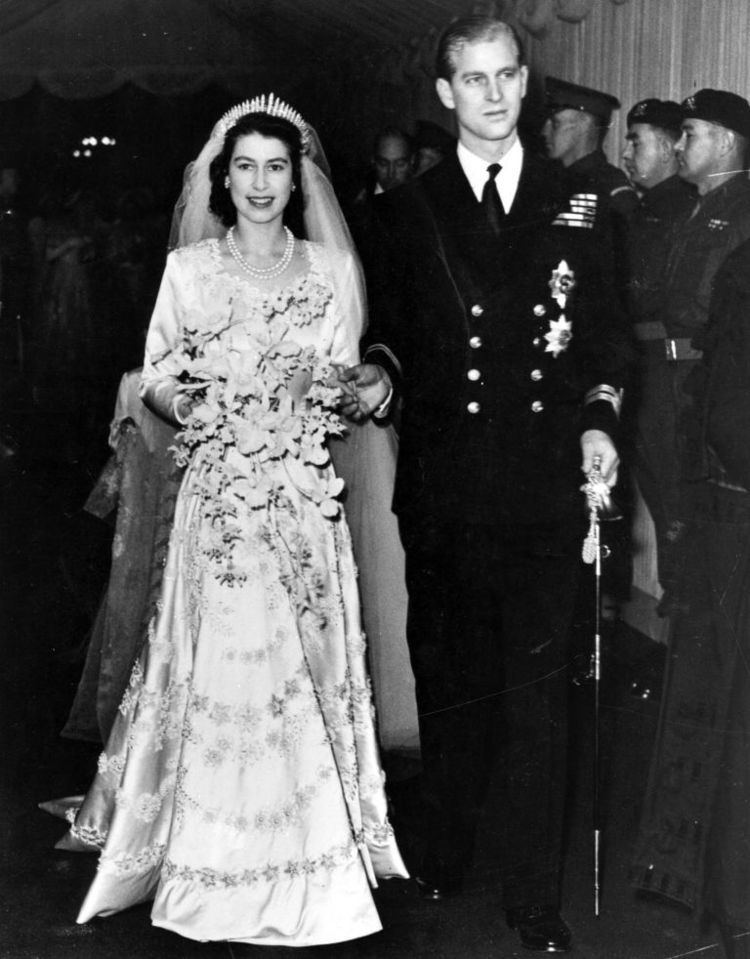 | ||
Participants Princess Elizabeth and Philip, Duke of Edinburgh Location Westminster Abbey, London, England | ||
The wedding of Elizabeth II and Prince Philip, Duke of Edinburgh took place on 20 November 1947 at Westminster Abbey in London.
Contents
- Engagement
- Wedding
- Clothing
- Music
- The brides family
- Bowes Lyon Family
- The grooms family
- Other foreign royalty
- Absentees
- References
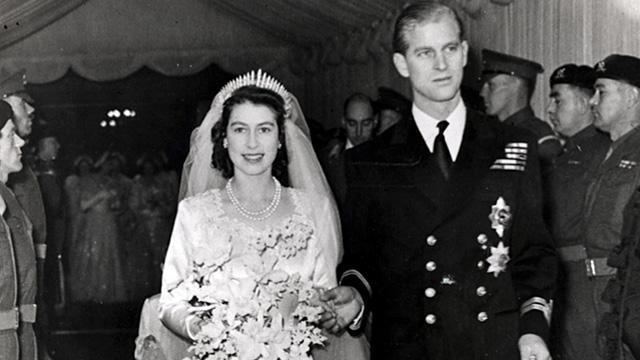
Engagement
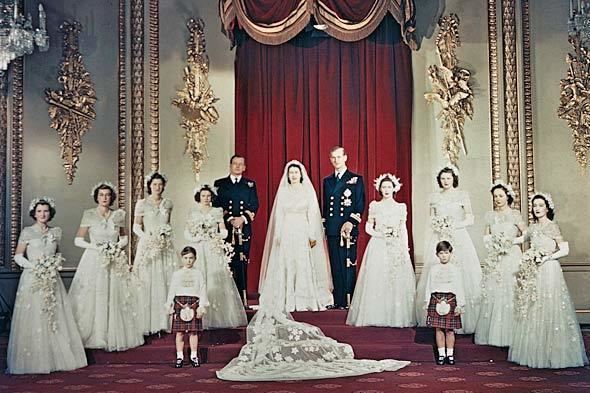
Elizabeth and Philip are second cousins once removed (by descent from Christian IX of Denmark and Louise of Hesse-Kassel) and third cousins (by descent from Queen Victoria and Prince Albert). Elizabeth met Prince Philip of Greece and Denmark in 1934, at the wedding of Philip's cousin Princess Marina of Greece and Denmark to Prince George, Duke of Kent, paternal uncle of Elizabeth, and again in 1937. After another meeting at the Royal Naval College in Dartmouth in July 1939, Elizabeth—though only 13 years old—fell in love with Philip and they began to exchange letters. An entry in Chips Channon's diary made reference to the future marriage of Elizabeth and Philip as early as 1941, "He is to be our Prince Consort, and that is why he is serving in our Navy." The couple became secretly engaged in 1946, when Philip asked King George VI for his daughter's hand in marriage. The King granted his request providing any formal engagement was delayed until Elizabeth's 21st birthday the following April. Their engagement was officially announced on 9 July 1947.
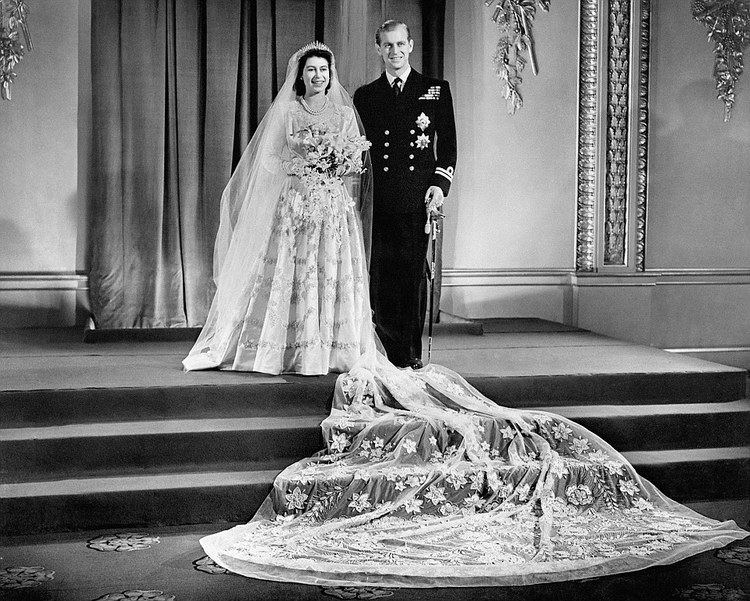
The King gave his formal consent to the marriage in his British Privy Council, in accordance with the Royal Marriages Act 1772. The same was done in Canada at a meeting of the King's Canadian Privy Council, with the Chief Justice, Thibaudeau Rinfret, standing in as deputy to the King's representative, the Governor General of Canada.
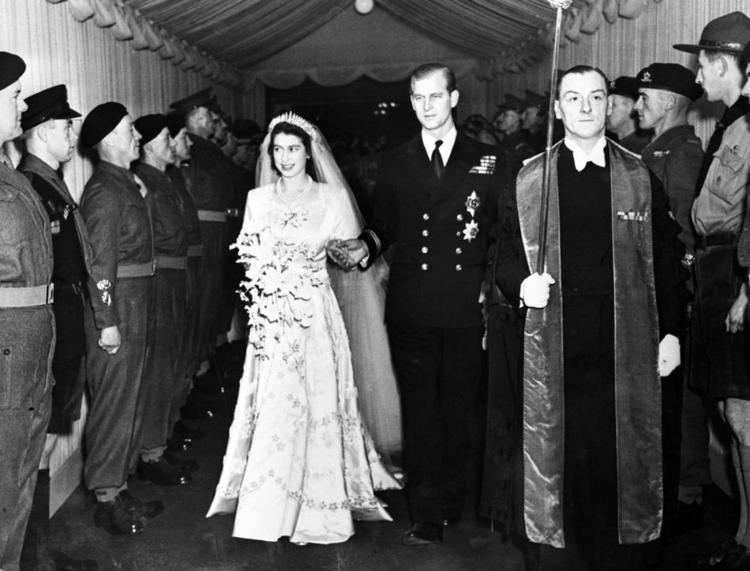
Before the marriage, Philip renounced his Greek and Danish titles, converted from Greek Orthodoxy to Anglicanism and adopted the style "Lieutenant Philip Mountbatten", taking the surname of his mother's British family. The day before the wedding, King George VI bestowed the style "His Royal Highness" and, on the morning of the wedding, 20 November 1947, he was made the Duke of Edinburgh, Earl of Merioneth, and Baron Greenwich of Greenwich in the County of London.
Wedding
Princess Elizabeth and Prince Philip were married at 11:30 GMT on 20 November 1947 at Westminster Abbey.
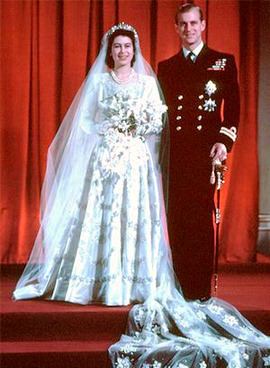
Princess Elizabeth was attended by eight bridesmaids: HRH The Princess Margaret (her younger sister), HRH Princess Alexandra of Kent (her first cousin), Lady Caroline Montagu-Douglas-Scott (daughter of the Duke of Buccleuch), Lady Mary Cambridge (her second cousin), Lady Elizabeth Lambart (daughter of the Earl of Cavan), The Hon. Pamela Mountbatten (Philip's first cousin), The Hon. Margaret Elphinstone (her first cousin) and The Hon. Diana Bowes-Lyon (her first cousin). Her cousins Prince William of Gloucester and Prince Michael of Kent served as page boys.
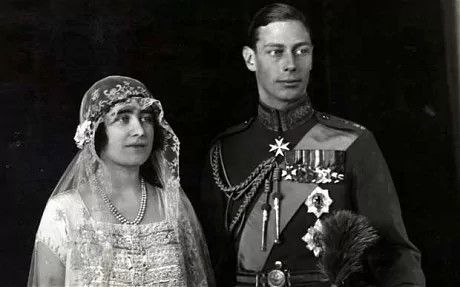
The royal parties were brought in large carriage processions, the first with The Queen and Princess Margaret and later a procession with Queen Mary. Philip left Kensington Palace with his best man, the Marquess of Milford Haven. Princess Elizabeth arrived at the Abbey with her father, King George, in the Irish State Coach.
The wedding ceremony was officiated by the Archbishop of Canterbury, Geoffrey Fisher, and the Archbishop of York, Cyril Garbett. The ceremony was recorded and broadcast by BBC Radio to 200 million people around the world. Elizabeth and Philip then proceeded to Buckingham Palace, where a breakfast was held at the Ball Supper-room. The couple received over 2,500 wedding presents from around the world and around 10,000 telegrams of congratulations.
Upon their marriage, Elizabeth took the title of her husband and became Princess Elizabeth, Duchess of Edinburgh. They departed for their honeymoon at Broadlands in Hampshire, home of Philip's uncle, Earl Mountbatten.
Clothing
On the morning of her wedding, as Princess Elizabeth was dressing at Buckingham Palace before leaving for Westminster Abbey, her tiara snapped. The court jeweller, who was standing by in case of emergency, was rushed to his work room by a police escort. Queen Elizabeth reassured her daughter that it would be fixed in time, and it was. For her wedding dress she still required ration coupons to buy the material for her gown, designed by Norman Hartnell. Elizabeth did her own makeup for the wedding.
Music
William Neil McKie, the Australian organist and Master of the Choristers at the abbey, was the director of music for the wedding, a role he again filled at Elizabeth's coronation in 1953. McKie also wrote a motet for the occasion, "We wait for thy loving kindness, O God". Psalm 67, "God be merciful unto us and bless us", was sung to a setting by Sir Edward Cuthbert Bairstow. The anthem was "Blessed be the God and Father of our Lord Jesus Christ" by Samuel Sebastian Wesley; the hymns were "Praise, my soul, the king of heaven", and "The Lord's my Shepherd" to the Scottish tune "Crimond" attributed to Jessie Seymour Irvine, which was largely unknown in the Church of England at the time. A descant to "Crimond" had been taught to Princesses Elizabeth and Margaret by a lady-in-waiting, Lady Margaret Egerton; the music for the descant could not be found, so the princesses and Lady Margaret sang it to William McKie, who wrote it down in shorthand. The service started with a specially composed fanfare by Arnold Bax and finished with Felix Mendelssohn's "Wedding March". The abbey choir was joined by the choirs of the Chapel Royal and St George's Chapel, Windsor.
The bride's family
Bowes-Lyon Family
The groom's family
Other foreign royalty
Iraq:
Yugoslavia:
The Netherlands:
Belgium:
Luxembourg:
Absentees
So soon after the end of World War II, it was not acceptable for the Duke of Edinburgh's German relations, including Philip's three surviving sisters, to be invited to the wedding. Other notable absentees were the Duke of Windsor, the former king, who was not invited, and his sister, Mary, Princess Royal, who said she was ill. (Her husband, Henry Lascelles, 6th Earl of Harewood, had died six months before). Ronald Storrs claimed that she did not attend in protest at her brother's exclusion.
